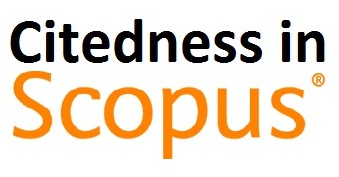Predictive Analysis of Customer Retention Using the Random Forest Algorithm
DOI:
https://doi.org/10.38043/tiers.v3i1.3616Keywords:
Analisa Prediksi, Customer, Churn, Retensi pelanggan, Random forest, Service quality.Abstract
Retaining customers is becoming a measurement focus in an industry with increasing competition. The concept of customer retention has become a research study in the sales industry, because it is difficult to retain customers and easily switch to other brands. Customer repurchase decisions in the business world of sales are very competitive. Customer satisfaction is directly proportional to the retention rate, if the customer is not satisfied then the automatic retention rate will be low. If the company is not able to meet customer expectations, it will have a serious impact on the company, namely moving customers to other services. Service factors, price, profit value, satisfaction and trust affect customer retention. One of the factors that influence consumers to become customer retention is service quality. A predictive customer retention plan is needed with data mining using the random forest algorithm. The random forest algorithm is a method that generates a number of trees from sample data, where the creation of one tree during training does not depend on the previous tree, the decision is based on the most voting. The voting results from several decision trees that are formed are the boundaries that are used as class determination in the classification process and the most votes are the winners and determine the classification class. This study aims to determine and analyze customer loyalty, customer trust and customer satisfaction. So that it can make it easier to monitor customers at the company. The results can be seen with the percentage of about 81.12% customer retention and about 18.87% customer churn. The result of feature evaluation shows that customer_activity has the highest influence on customer retention, followed by subtotal and qty.
Downloads
References
S. F. Sabbeh, “Machine-learning techniques for customer retention: A comparative study,” Int. J. Adv. Comput. Sci. Appl., vol. 9, no. 2, pp. 273–281, 2018.
S. Nabavi and S. Jafari, “Providing a Customer Churn Prediction Model Using Random Forest and Boosted TreesTechniques (Case Study: Solico Food Industries Group),” J. Basic. Appl. Sci. Res, vol. 3, no. 6098, pp. 1018–1026, 2013.
P. W. Anuang and P. K. Dyah, “Pengaruh Adopsi Teknologi dan Social Media Marketing Terhadap Minat Beli Serta Dampaknya Terhadap Keputusan Pembelian ( Studi Pada Perusahaan Niluh Djelantik ),” Tiers Inf. Technol. J., vol. 1, no. 1, pp. 25–32, 2020.
N. Hayati and D. Suryana, “Pengaruh Kepercayaan dan Komitmen Terhadap Loyalitas Pelanggan,” J. Sains Manaj. Akunt., vol. IV, no. 2, pp. 52–67, 2012.
A. Ambarini, D. Novirani, and A. Bakar, “Upaya Peningkatan Kepuasan Pelanggan Indosat Berdasarkan Telecommunication Service Quality dengan Menggunakan Structural Equation Modelling (SEM),” J. Online Inst. Teknol. Nas., vol. 02, no. 01, pp. 204–216, 2014.
A. Dharmalau, Y. Suhanda, and lela Nurlaela, “Perancangan Sistem Informasi Pelayanan Purna Jual berbasis Customer Relationship management,” J. Rekayasa Inf. Swadharma ( JRIS ), vol. 01, no. 01, pp. 1–8, 2021.
M. Asqia and T. Nabarian, “Pemanfaatan Google Sheets dan Google Form untuk Layanan Administrasi Mahasiswa Menggunakan Konsep Electronic Service Quality,” J. Teknol. Terpadu, vol. 7, no. 1, pp. 15–22, 2021.
N. Wayan, A. Karmila, W. Sunia, F. Ekonomi, and D. Bisnis, “Pengaruh E-Service Quality, Word Of Mouth, Price, dan Promotion Terhadap Minat Konsumen Menggunakan Layanan Jasa Go-Jek (Studi Kasus Pada Masyarakat Pengguna Go-Jek Di Kota Denpasar),” TIERS Inf. Technol. J., vol. X, No.X, no. 39, pp. 41–54, 2020.
S. Mulyana, E. Winarko, P. Studi, I. Komputer, and U. G. Mada, “TEKNIK VISUALISASI DALAM DATA MINING,” vol. 2009, no. semnasIF, pp. 100–106, 2009.
B. Prasojo and E. Haryatmi, “Analisa Prediksi Kelayakan Pemberian Kredit Pinjaman dengan Metode Random Forest,” J. Nas. Teknol. dan Sist. Inf., vol. 7, no. 2, pp. 79–89, 2021.
C. I. Agustyaningrum, W. Gata, R. Nurfalah, U. Radiyah, and M. Maulidah, “Komparasi Algoritma Naive Bayes, Random Forest Dan Svm Untuk Memprediksi Niat Pembelanja Online,” J. Inform., vol. 20, no. 2, pp. 164–173, 2020.
I. Afdhal, R. Kurniawan, I. Iskandar, R. Salambue, E. Budianita, and F. Syafria, “Penerapan Algoritma Random Forest Untuk Analisis Sentimen Komentar Di YouTube Tentang Islamofobia,” J. Nas. Komputasi dan Teknol. Inf., vol. 5, no. 1, pp. 49–54, 2022.
A. Sharma, G. Deepak, N. Nikhil, S. Deepti, and V. Ankita, “Prediction of Customer Retention Rate Employing Machine Learning Techniques,” Int. Conf. Informatics, vol. 1, no. 1, pp. 103–107, 2022.
I. Ullah, B. Raza, A. K. Malik, M. Imran, S. U. Islam, and S. W. Kim, “A Churn Prediction Model Using Random Forest: Analysis of Machine Learning Techniques for Churn Prediction and Factor Identification in Telecom Sector,” IEEE Access, vol. 7, pp. 60134–60149, 2019.
Downloads
Published
How to Cite
Issue
Section
License
Copyright (c) 2022 Andy Dharmalau, Lela Nurlaela, Yogasetya Suhanda, Ike Kurniati, Ita Rosita

This work is licensed under a Creative Commons Attribution-ShareAlike 4.0 International License.





















